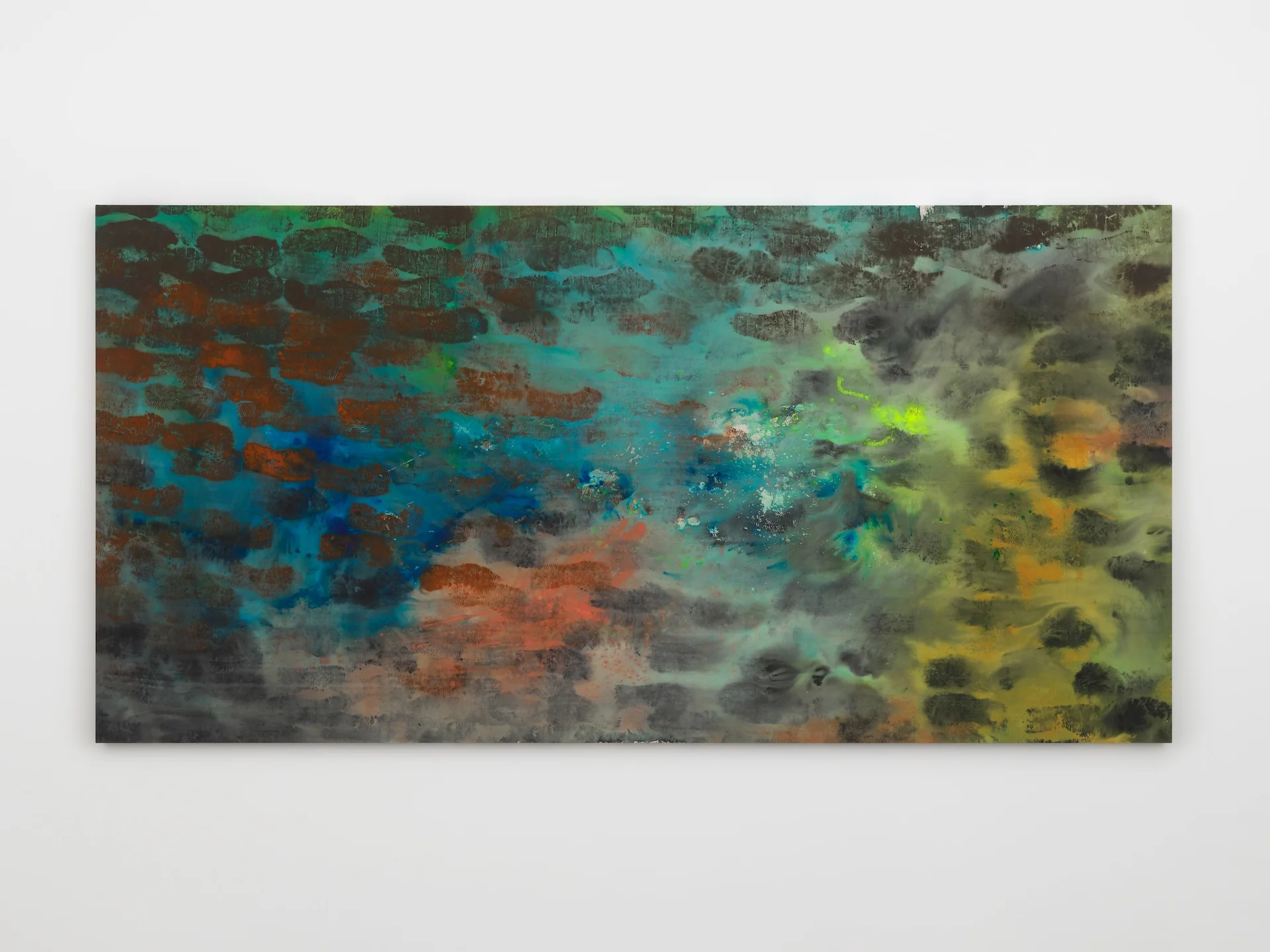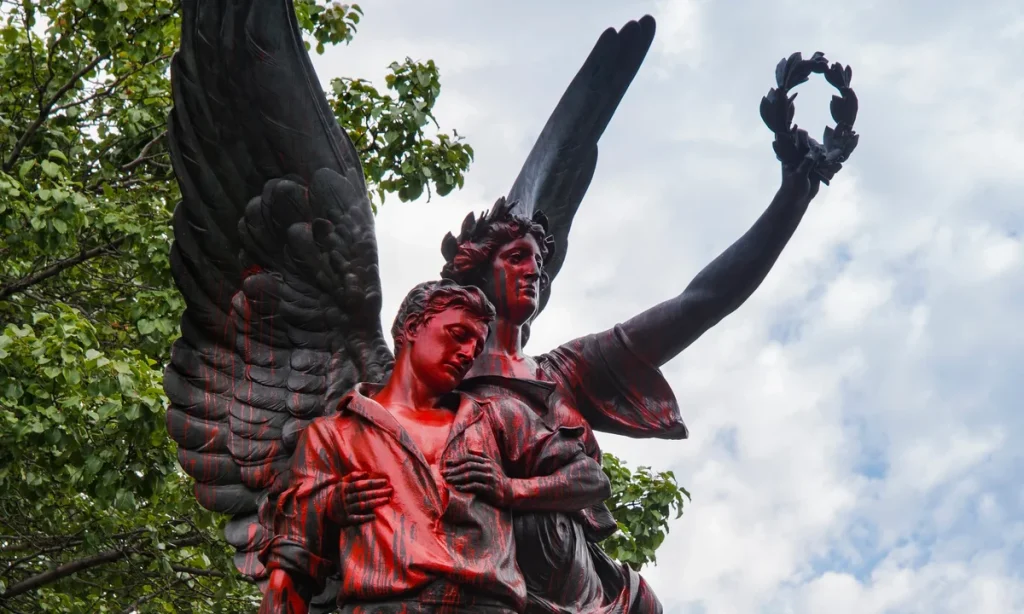In 2017, the city of Charlottesville, Virginia, voted to remove an enormous bronze statue of the Confederate general Robert E. Lee—the result of a countrywide reckoning with the legacy of slavery in the US. The decision led to a violent rally dubbed Unite the Right, where white supremacists (including Neo-Nazis and Ku Klux Klansmen) descended on the downtown park where the monument stood, terrorising antiracist counter-protesters. The clash left one woman dead and many others injured. During a press conference following the deadly event, US president Donald Trump told reporters that there were “very fine people on both sides”, a comment that shocked the nation—including Hamza Walker, the director of the Brick in Los Angeles.
“That moment, and the chain of events immediately following, when another 25 to 30 monuments came down, prompted the idea for the show,” Walker tells The Art Newspaper of the new exhibition Monuments, which opens on 23 October in Los Angeles. “It was a big event both socio-politically and culturally; these monuments are artworks and, as curators, that falls in our domain.” In 2019, Walker approached the Museum of Contemporary Art, Los Angeles (Moca) with the concept. The museum’s leadership, including the senior curator Bennett Simpson, jumped on board.
Six years later, Monuments—co-curated by Walker, Simpson and the artist Kara Walker—takes place at both Moca and the Brick. The exhibition places decommissioned monuments borrowed from numerous Southern municipalities, including Charlottesville, in dialogue with a selection of existing and newly commissioned contemporary works of art. “These monuments have so many stories to tell,” Simpson says. “There’s a lot about American history that can be learned from considering them.”
Of the nearly 20 monuments represented in the exhibition, some are in fragments or heavily vandalised, while others remain intact and unmarred. A majority honour Confederate soldiers and prominent supporters of slavery. Among them is a bronze of Jefferson Davis, the president of the Confederate States of America, splattered in scarlet paint and taken from a much larger monument. The Lee memorial at the centre of the Unite the Right rally is also on display in its current decommissioned form: a pile of bronze ingots left over after the sculpture was melted down in 2023. The Matthew Fontaine Maury Globe, the largest work in the exhibition, is a colossal orb encircled by a storm representing a Confederate naval officer’s contributions to the field of oceanography.
Nona Faustine’s On This Spit Of Land Massa and I Reside, Dutch Reform Cemetery, Brooklyn, NY (2013) Courtesy the Estate of Nona Faustine and Higher Pictures
The contemporary works on view encompass photography, painting, video and sculpture by artists such as Leonardo Drew, Martin Puryear and the late Nona Faustine. The contemporary works are not proposals for new monuments; rather, they function more as counter-monuments that often adopt the “language of monuments” to critique them, according to the show’s curators.
The artist Kahlil Robert Irving, for example, used bronze—a material commonly reserved for monuments due to its grandeur and durability—to realise a rendering of Ferguson, Missouri, where the 18-year-old Michael Brown was shot and killed by the police officer Darren Wilson in 2014. “There are important parts of our past that are much closer than we think,” says Irving, who is based in nearby St Louis. He says that his work, New Nation (States) Battle of Manassas—2014 (2024-25), aims to “connect historical instances of violence driven by white-supremacist ideologies to this current moment of violence and illegibility”.
Meanwhile, the artist Bethany Collins repurposed materials directly from a dismantled monument, transforming granite originally used for a Confederate tribute into a memorial honouring Black women in her sculpture Love is dangerous (2024-25).
And Walter Price’s new series of paintings responds directly to the Matthew Fontaine Maury Globe. He created six colourful Cadence paintings primarily using his feet, a reference to both the marching drills he participated in while in the military and to the leg injury Maury sustained during his service as a naval officer. “Because the show deals with the history of slavery and forced labour, I was motivated to make these paintings using minimal effort,” Price says. The lyrical acrylic-and-gesso abstractions—in vibrant shades of cobalt, teal and tangerine—offer a visual, if not conceptual, reprieve from the solemnity of metal and stone.

Walter Price’s Pond de Rivaaahh (2023) Photo: Elisabeth Bernstein, courtesy the artist and Greene Naftali, New York
“Some of the works are bullseyes, confronting the theme straight on,” Walker says of the contemporary pieces on view. “Others have a more oblique but complementary connection that’s initially more subtle or nuanced.”
Whereas Price’s work might serve as an example of a quieter approach, Hank Willis Thomas’s A Suspension of Hostilities (2019)—featuring a 1969 Dodge Charger styled after one on the series The Dukes of Hazzard, emblazoned with a Confederate flag and the words “General Lee”, and smashed nose-first into the ground—exemplifies a more aggressive and explicit confrontation with the symbols and legacies problematised by the exhibition.
In light of the current political climate in the US, including attacks on museums charged with preserving the country’s history—both the honourable and the horrific—Monuments has an especially urgent feel to it. Yet both Walker and Simpson encourage viewers to consider the ambitious show as a reaction to the past decade as opposed to the present moment, even as it addresses today’s most pressing issues. Their hopes remain the same as they were in 2019: to historicise, stir curiosity and foster dialogue.
“Yes, this show will mark a lot of the harmful events of the past,” Irving says. “But this isn’t about pointing fingers as much as it’s about coming together, learning, growing and making this a place better for all of us.”
- Monuments, the Brick and Museum of Contemporary Art, Los Angeles, 23 October-3 May 2026
